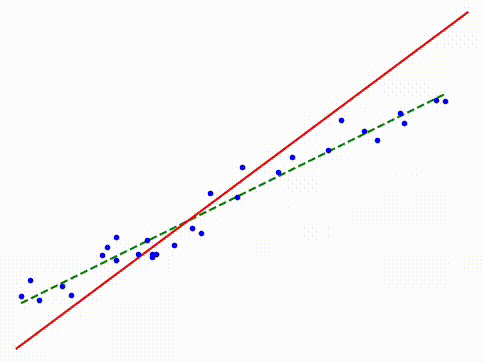This project implements simple linear regression from scratch using gradient descent to find the optimum.
-
Ft_linear_regression.py:
- Reads a dataset from a CSV file (passed as an argument)
- Assumes the dataset has 2 columns: target variable (1st) and independent variable (2nd)
- Trains the linear regression model on the provided data
- Saves the line values in a
results.txtfile - Generates plots of the regression and loss function
-
predict.py:
- Takes a number as input
- Predicts a value based on the previous training
-
precision.py:
- Calculates and returns the Mean Squared Error (MSE) of the regression
-
fancy_visualization:
- Demonstrates how the regression line fits a dataset step by step in an animation
Simple linear regression aims to find a linear relationship between an independent variable (x) and a dependent variable (y). The relationship is modeled as:
y = mx + b
Where:
- y is the predicted value
- x is the independent variable
- m is the slope of the line
- b is the y-intercept
The goal is to find the best values for m and b that minimize the difference between predicted and actual y values.
Gradient descent is an optimization algorithm used to find the values of m and b that minimize the cost function. The steps are:
- Initialize m and b with random values
- Calculate the predicted y values: y_pred = mx + b
- Compute the cost (Mean Squared Error): MSE = (1/n) * Σ(y_pred - y_actual)²
- Calculate the gradients:
- dm = (2/n) * Σ((y_pred - y_actual) * x)
- db = (2/n) * Σ(y_pred - y_actual)
- Update m and b:
- m = m - learning_rate * dm
- b = b - learning_rate * db
- Repeat steps 2-5 until convergence or for a fixed number of iterations
The learning rate in this program is fixed to 0.05 and an automatic stopping is implemented when the optimum is reached.
